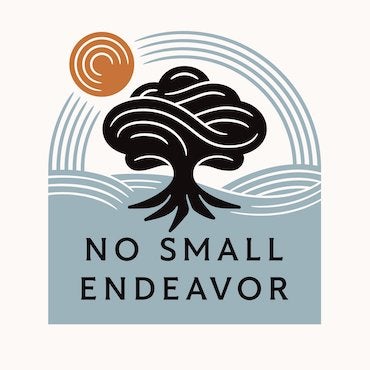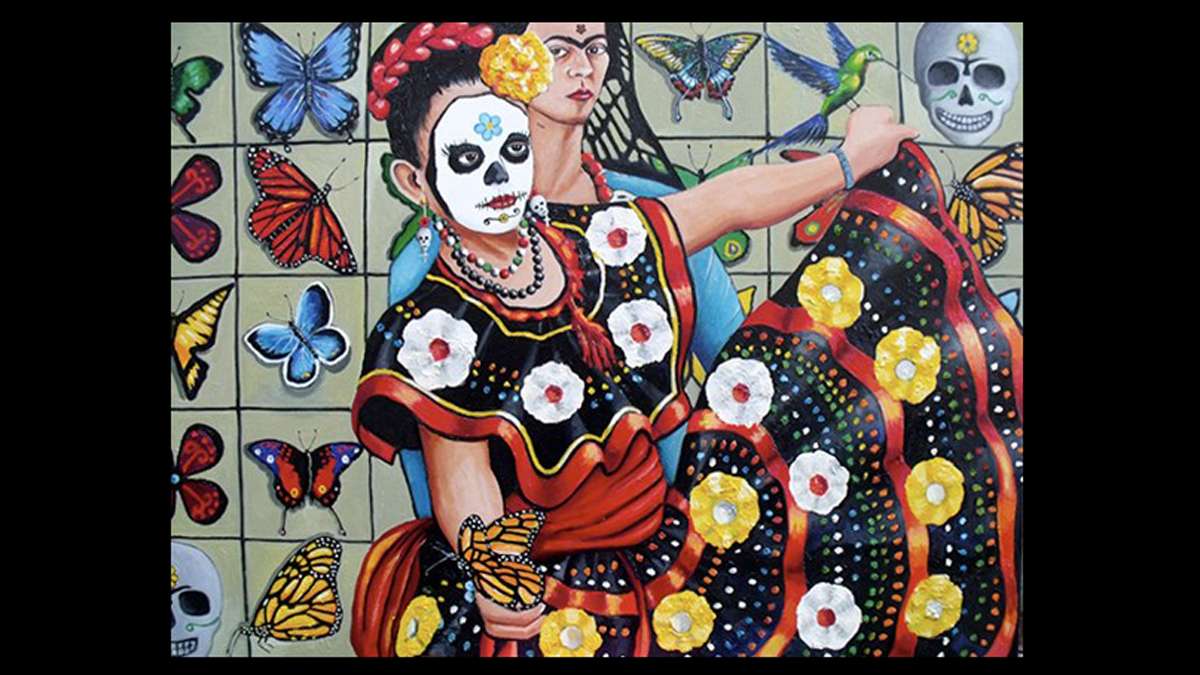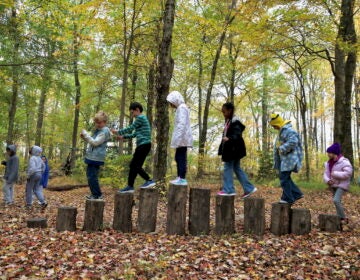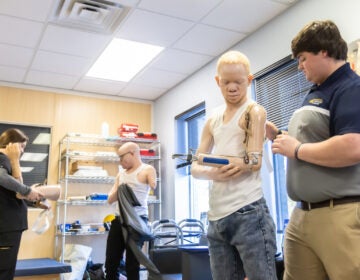New Jersey-based artist re-imagines the work of Frida Kahlo
Our Lady of Guadalupe has been revered for nearly five centuries in Mexico. As the story goes, in 1531 at the hill of Tepeyac in Tenochtitlan (Mexico City), a vision of a young woman surrounded by light appeared to the Indian peasant Juan Diego. She spoke to him in Nahuatl, his language, asking that a church be built in her honor. Juan Diego recognized her as the Virgin Mary, and she rewarded him with miraculous signs.
One of these involved sending Juan Diego to gather flowers from the top of Tepeyac Hill in December, when nothing would have been in bloom. Juan Diego came back with Castilian roses from the barren hilltop. The Virgin arranged these flowers in his cloak, and when Juan Diego opened his cloak before the bishop, the flowers fell to the floor. In their place was imprinted the image of the Virgin.
When Guadalupe Reyes was growing up in Oaxaca, this was one of her favorite stories told by her grandmother. Both were named for the Virgin of Guadalupe. Reyes’ abuela would take her to the Our Lady Of Guadalupe celebration every December 12 – also the grandmother’s birthday – and tell her the story of Juan Diego and the Virgin. “She took us to places where the appearances of the Virgin occurred,” recounts Reyes. “I loved listening to those stories. I am Catholic and I believe in the Virgin of Guadalupe. Every time I worry, I pray to her and I feel she listens to me.”
Reyes is putting the finishing touches on “Cubreme con tu Manto” (“Cover Me with your Mantle”). At the center of the enormous, lushly painted canvas is a young woman encircled with a large green cloak. The figure is holding a rosary symbolizing the artist’s faith. Her face is painted white, with blue circles around her eyes and nose. Red twigs grow from a green tree trunk, and a mystical butterfly looms overhead. Behind a brick wall is a large industrial city.
“The mantle is from the Virgin of Guadalupe,” said Reyes. “So ‘Cover Me with Your Mantle’ means I want the Virgin of Guadalupe to protect us.”
Reyes used a Mexican immigrant to model the central figure “who symbolizes every Mexican who sees in herself the desire to immigrate to this country because she wants to have a better life.”
Reyes’ paintings are filled with stories, symbolism, fantasy and dreams. The butterfly in “Cubreme con tu Manto” signifies rebirth and liberty. The red branches are full of blood, said Reyes, representing the connection between faith and life, and the Virgin’s cloak is attached to the tree and the tree is attached to the heart. A little dress hangs from the tree, an homage to the artist’s muse, Frida Kahlo. Reyes quotes Kahlo: “I may be in America but only my dress hangs there…my life is in Mexico.”
Reyes’ first solo exhibition, Arte de mi Corazon (Art of My Heart), is at the Pennington School’s Silva Gallery through Nov. 22, with a reception Nov. 1, 5 to 7 p.m. There is a Day of the Dead theme throughout the works, in conjunction with Mexico’s Dia de los Muertos celebration.
“Skulls – known as calaveras or calacas in Mexico – are an essential part of the symbolism of Dia de los Muertos in Mexico,” writes Reyes. “They are used not only as the basis for painting faces, but also are the shape of candy such as sugar skulls and for many skeleton-inspired decorations. The Day of the Dead is a fascinating mixture of Spanish Catholic and native Aztec traditions and beliefs. People in Mexico wear skull masks, and the tradition of painting faces to look like a skull has grown up as a variation to this. The wearing of masks has been a powerful symbol throughout traditional cultures, of the ability of humans to get in touch with their darker, chaotic side.”
Reyes is unabashedly influenced by Kahlo. Her Hightstown High School art teacher Bill Plank first introduced her to Mexico’s cultural icon. Intrigued by Kahlo’s volatile marriage to Diego Rivera, her political activities and relationships with Isamu Noguchi and Leon Trotsky, Reyes did a presentation on Kahlo for English class.
“One night I had a dream,” recounts Reyes. “I was lying in bed and she was in her wheelchair next to me, and when I greeted her I saw her soul coming out and entering into my body. She said ‘Don’t you want to be like me,’ and I said ‘Yeah but I don’t want to be crazy like you.’ When I woke up, that’s what happened to me. Sometimes I think I’m crazy.”
At age 29, Reyes – who immigrated to this country when she was 15, learning English for the first time — not only is having her first solo show, but has exhibited in California, New York and New Jersey. She has a website as lush in design as her paintings, well organized and up to date, a blog, and is savvy about marketing herself on social media – she credits classes at Mercer County Community College for teaching her to develop a business plan.
Raised in Oaxaco by her grandmother, a ceramic artist, Reye’s mother moved to the U.S. when Reyes was 3. Although she drew and used crayons as a child, copying cartoons from the newspaper, Reyes first began taking art classes in high school. At Mercer County Community College, she earned an associate’s degree in management and works as a quality control inspector at Coregistics in Cranbury, but returned for a second associate’s degree in art at MCCC.
“My grandmother said I’d be a painter one day,” said Reyes. Two years after Reyes came to the U.S., her abuela died. By painting her culture, Reyes is bringing back her grandmother. “When I’m painting, doing what I like, she’s with me.” She hopes to return to Mexico some day to teach art. “My dream is to be able to help poor children. I want to be a recognized artist, but first I want to help kids in Mexico.”
“I can still close my eyes today and smell the flavors of that food, the land and the flowers,” Reyes writes of her homeland. “I can see my grandmother cooking and laughing with us still. These are some of the feelings and impressions that I hope to share in my work.”
______________________________________________
The Artful Blogger is written by Ilene Dube and offers a look inside the art world of the greater Princeton area. Ilene Dube is an award-winning arts writer and editor, as well as an artist, curator and activist for the arts.
WHYY is your source for fact-based, in-depth journalism and information. As a nonprofit organization, we rely on financial support from readers like you. Please give today.








